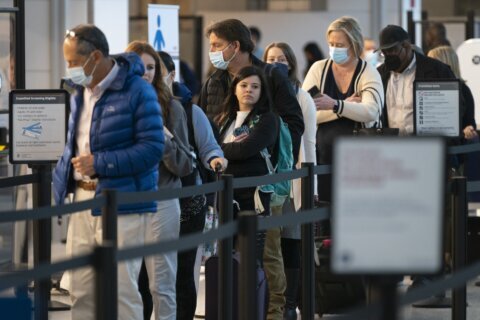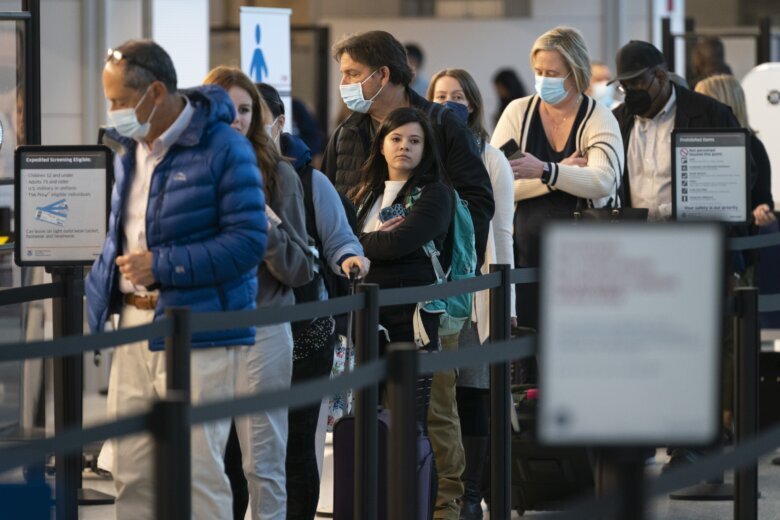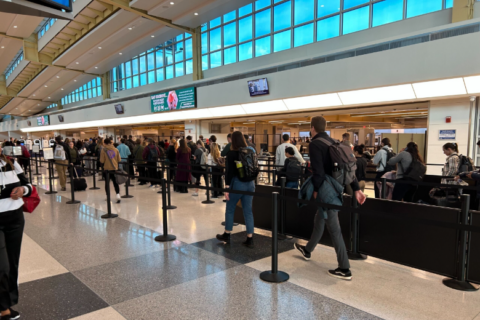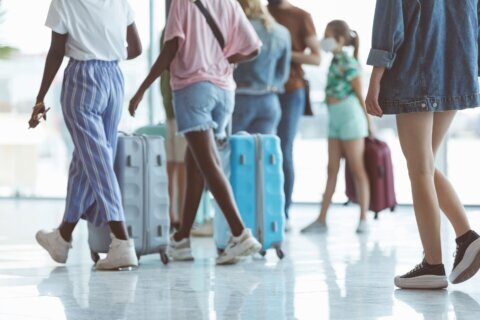
The Justice Department is being asked by the Centers for Disease Control and Prevention to appeal a recent federal ruling that lifted the mask mandate on public transportation.
The decision is being met by protests from the U.S. Travel Association, which said any mask requirement now “is simply out of step with the current public health landscape.”
Meanwhile, several transit systems around the region quickly lifted mask mandates hours after the judge’s ruling.
“There are many other activities we do without mask requirements from the government that are higher risk,” said Dr. Amesh Adalja, an infectious disease specialist with Johns Hopkins Center for Health Security. “Travel, particularly on airplanes, is lower risk than almost any other activity based on the air filtration and the air exchanges that occur.
“When you’re on an airplane, the air is exchanged almost to the highest degree possible and the air is also HEPA filtered. People aren’t in that type of situation when they’re not wearing a mask at a restaurant eating,” he added. “So it’s always been paradoxical to me that they had left the federal mask mandate only for travel, which is arguably lower risk than most of the other activities that we do that don’t have a mask mandate by the government.”
Now, when it comes to someone who is considered higher risk or is immunocompromised, they might need to take different calculations than someone else, including wearing a mask in crowded settings and on buses and subway trains. But he says even then, they should feel safe if they’re wearing a good, filtering mask, such as an N-95 or KN-95.
“One-way masking works,” said Adalja. “We use one-way masking all the time in the hospital. When I take care of a tuberculosis patient, it’s a one-way masking situation and I’m completely safe.”
Taking into account the various treatments, medications, and vaccines that are available to anyone, he says healthy American should start assessing their own risks and making judgments as they go.
“I think for people who are high risk, they should continue to think about wearing masks when they’re in high-risk situations,” Adalja said. “They want to continue to try to minimize their risk. But for the average healthy person, I think they have to make an individual risk calculation but it’s not one-size-fits-all.
“We have to have a conversation about risk calculation and harm reduction and sort of move away from the abstinence-only approach that we’ve had for two years for a lot of the country, or at least a segment of the population, because this isn’t going anywhere,” Adalja said. “If not now, when? Because we’re going to have COVID-19 cases 100 years from now.”









